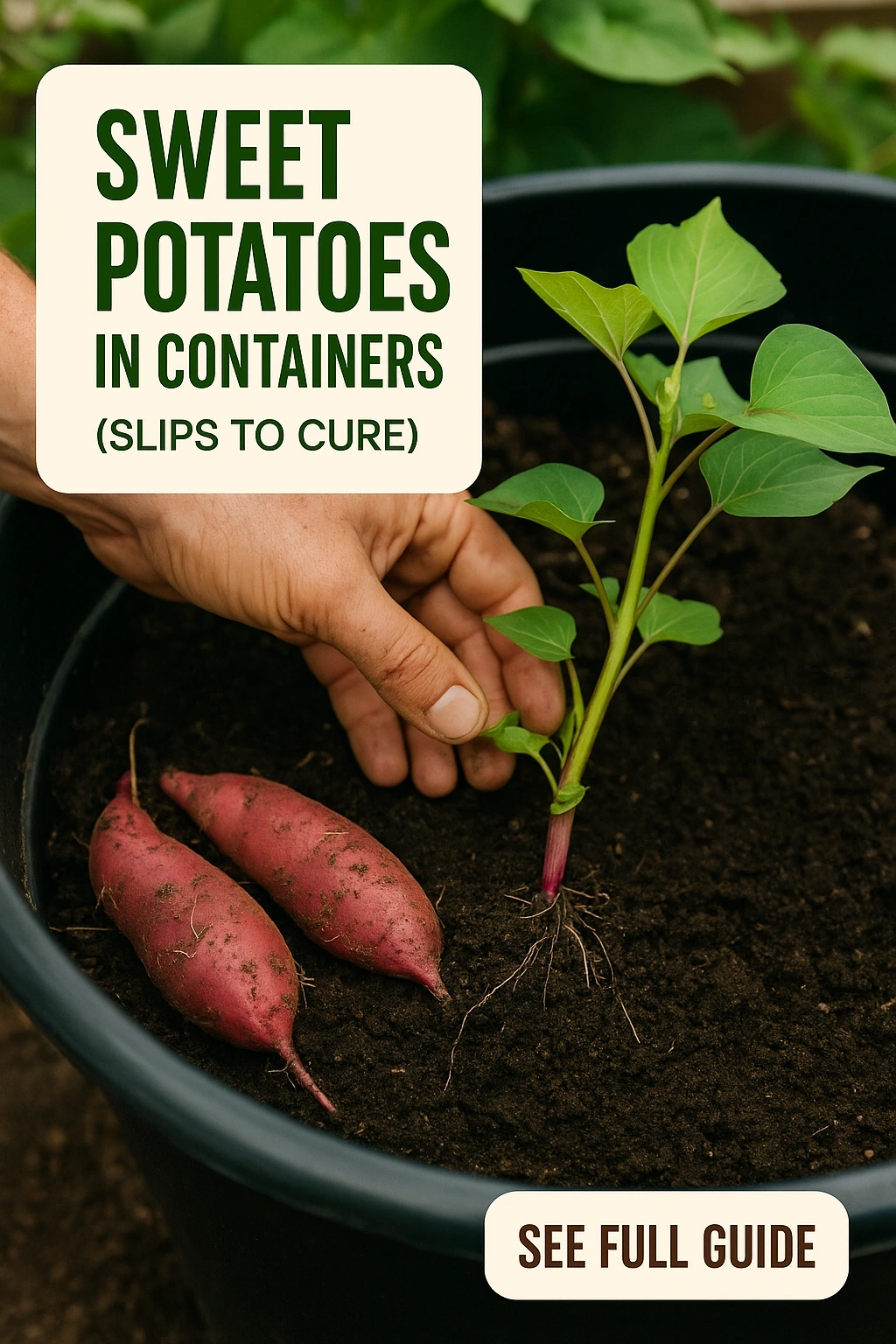
Sweet potatoes are not only delicious and nutritious, but they can also be a rewarding addition to your home garden. Growing sweet potatoes in containers is a practical solution for those with limited space or poor soil conditions. This article explores the process of cultivating sweet potato slips and how to cure them effectively, ensuring a bountiful harvest.
Understanding Sweet Potato Slips
Sweet potato slips are the young shoots that grow from the sweet potato tubers. They are essential for starting your sweet potato plants. To cultivate sweet potatoes in containers, you must first learn how to grow these slips, which is a straightforward process that can be done at home.
How to Grow Sweet Potato Slips
Growing sweet potato slips is an engaging and rewarding task. It typically begins with healthy, organic sweet potatoes that can be sourced from a local market or garden center. The process involves sprouting the tubers in a warm, humid environment, allowing them to develop shoots that can be planted in containers.
Choosing the Right Sweet Potatoes
Selecting the right type of sweet potato is crucial for successful slip production. Look for organic varieties that are free of blemishes. Varieties like Beauregard and Jewel are popular choices due to their high yield and adaptability. Ensure the tubers are firm and healthy to maximize the chance of successful sprouting.
Sprouting Process
To sprout sweet potato slips, place the tubers in a shallow container filled with water, ensuring that only the bottom half is submerged. Alternatively, you can place them in a soil bed, with the top half exposed. Keep the setup in a warm area, ideally around 70-80°F (21-27°C). Within a few weeks, you will notice shoots emerging from the tubers. Once the shoots are about 6 inches long, they can be removed and planted.
Preparing Containers for Sweet Potatoes
Choosing the right container is essential for successful sweet potato cultivation. Sweet potatoes require adequate space to grow, so selecting a large enough container is crucial. Containers should have drainage holes to prevent waterlogging, which can lead to rot.
Container Size and Type
Opt for containers that are at least 5 gallons in size. Fabric pots, wooden boxes, or large plastic containers can all work well. The material should be sturdy and allow for proper drainage. Additionally, consider using a container that offers insulation against temperature extremes, as sweet potatoes thrive in warm conditions.
Soil Requirements
Sweet potatoes prefer loose, well-draining soil that is rich in organic matter. A mixture of potting soil, compost, and sand can create an ideal growing medium. Ensure that the soil pH is between 5.8 and 6.5 for optimal growth. Adding organic fertilizers can also enhance soil fertility and promote healthy growth.
Caring for Sweet Potatoes in Containers
Proper care is essential for growing healthy sweet potatoes in containers. This includes providing adequate water, monitoring for pests, and ensuring they receive enough sunlight. Sweet potatoes are relatively low-maintenance but require consistent attention to thrive.
Watering Practices
Sweet potatoes require consistent moisture, especially during the growing season. Water the plants thoroughly, ensuring the soil is moist but not waterlogged. Generally, watering once a week should suffice, but adjustments may be necessary depending on weather conditions. Be cautious not to let the soil dry out completely, as this can hinder tuber development.
Sunlight and Temperature Needs
Sweet potatoes thrive in full sun, requiring at least 6 to 8 hours of direct sunlight daily. Place containers in a location that receives adequate sunlight, such as patios, balconies, or garden areas with minimal shade. Maintaining a warm environment is crucial, as sweet potatoes grow best in temperatures between 70°F and 85°F (21°C to 29°C).
Harvesting Sweet Potatoes
Harvesting sweet potatoes requires careful timing and technique. Typically, sweet potatoes are ready to harvest around 90 to 120 days after planting the slips. Signs of readiness include yellowing leaves and the tops dying back, indicating that the tubers have matured.
How to Harvest
To harvest, gently loosen the soil around the base of the plant using a garden fork or shovel. Be cautious not to damage the tubers, as they can be quite delicate. Carefully lift the plants from the soil, and shake off any excess dirt. Handle the sweet potatoes gently to avoid bruising.
Post-Harvest Curing Process
After harvesting, sweet potatoes need to be cured to enhance their flavor and extend shelf life. Curing involves storing the tubers in a warm, humid environment for about 10 to 14 days. An ideal curing temperature is around 85°F (29°C) with high humidity. This process helps convert the starches in the tubers into sugars, improving taste and texture.
FAQs
Can I grow sweet potatoes in any type of container?
While you can use various containers, it’s essential to choose one that is at least 5 gallons in size with good drainage. Fabric pots, wooden boxes, or large plastic containers work best.
How long does it take for sweet potato slips to grow?
Sweet potato slips typically take about 4 to 6 weeks to grow to a suitable size for planting, depending on environmental conditions.
What is the best time to plant sweet potato slips?
Sweet potato slips should be planted after the last frost date in your area, usually in late spring when the soil temperature is consistently warm.
How do I know when my sweet potatoes are ready to harvest?
Sweet potatoes are usually ready to harvest 90 to 120 days after planting. Look for yellowing leaves and dying tops as indicators of maturity.
Is it necessary to cure sweet potatoes after harvesting?
Curing is recommended as it enhances flavor and extends the shelf life of sweet potatoes. It helps convert starches into sugars, improving taste.
